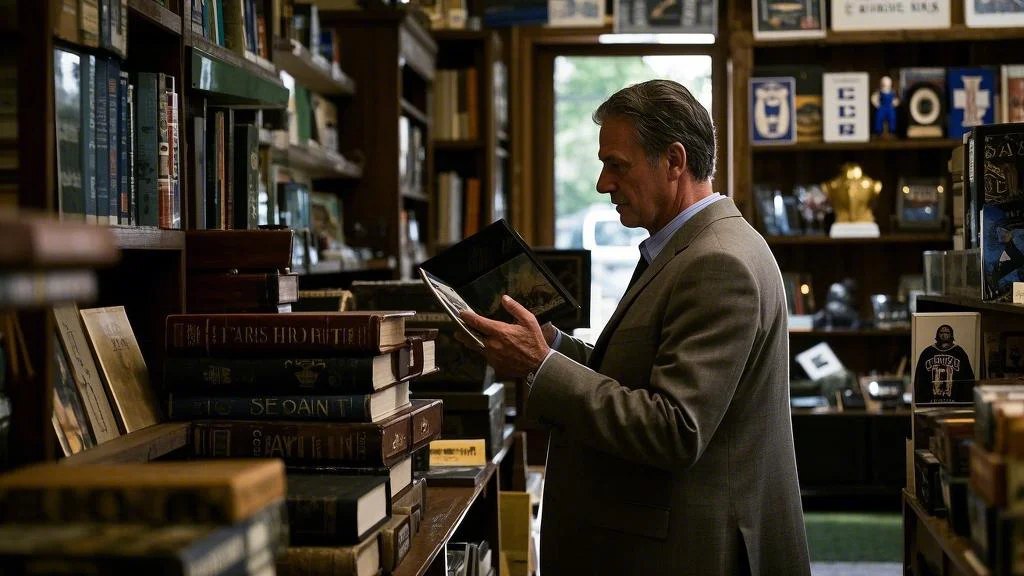Buying Rare Collectibles: The Most Valuable Items to Invest In

Why Rare Collectibles Are a Unique Investment Opportunity
Buying rare collectibles has become an increasingly popular way to diversify investment portfolios and tap into the world of tangible assets. Unlike traditional investments like stocks or bonds, rare collectibles offer a unique blend of historical, cultural, and emotional value. Items such as fine art, rare books, luxury fashion, and sports memorabilia have shown remarkable resilience in retaining and even increasing their value over time. For investors, this means an opportunity to own something truly special while potentially earning significant returns. The key to success lies in understanding the market, identifying items with proven appreciation potential, and ensuring proper authentication and preservation. Whether you’re a seasoned collector or a newcomer, rare collectibles can be a rewarding addition to your investment strategy.
Fine Art Investment: A Timeless Asset
When it comes to buying rare collectibles, few categories are as prestigious or lucrative as fine art investment. Masterpieces by renowned artists like Picasso, Van Gogh, and Banksy have consistently broken auction records, making them highly sought-after assets. The art market is driven by factors such as provenance, rarity, and the artist’s reputation, which can lead to substantial price appreciation over time. However, investing in fine art requires a deep understanding of the market and often involves significant upfront costs. Working with reputable galleries, auction houses, and art advisors can help you navigate this complex landscape. Additionally, art offers the unique benefit of aesthetic enjoyment, allowing investors to derive personal satisfaction from their acquisitions while waiting for their value to grow.
Rare Book Investing: Preserving History and Value
For those with a passion for literature and history, rare book investing offers a fascinating and potentially profitable avenue. First editions, signed copies, and historically significant manuscripts are among the most valuable items in this category. For example, a first edition of F. Scott Fitzgerald’s “The Great Gatsby” or a signed copy of J.K. Rowling’s “Harry Potter and the Philosopher’s Stone” can fetch millions at auction. The rarity and condition of the book are critical factors in determining its value, as is its cultural or historical significance. Collectors should also pay attention to trends in the literary world, as shifts in popular interest can impact demand. Proper storage and handling are essential to preserving the condition of rare books, ensuring they retain their value over time.
Luxury Fashion Resale: Turning Style into Profit
The world of luxury fashion resale has exploded in recent years, driven by growing demand for high-end brands like Hermès, Chanel, and Louis Vuitton. Iconic pieces such as Birkin bags, limited-edition sneakers, and vintage couture have become highly collectible, with some items appreciating significantly in value. The appeal of luxury fashion lies in its exclusivity and brand prestige, which often translate into strong resale potential. Platforms like The RealReal and Vestiaire Collective have made it easier than ever to buy and sell pre-owned luxury items, opening up this market to a broader audience. However, success in luxury fashion resale requires a keen eye for quality, authenticity, and market trends. Investing in timeless pieces with enduring appeal is often the safest bet for long-term profitability.
Sports Memorabilia Investment: Capturing the Spirit of the Game
For sports enthusiasts, sports memorabilia investment offers a way to combine passion with profit. Items such as signed jerseys, game-worn equipment, and championship rings hold immense sentimental and financial value. The market for sports memorabilia is particularly strong in the United States, where iconic moments and legendary athletes are deeply ingrained in the culture. For example, a baseball signed by Babe Ruth or a jersey worn by Michael Jordan can command astronomical prices at auction. The key to success in this niche is authenticity, as the market is rife with forgeries. Working with certified dealers and auction houses is essential to ensuring the legitimacy of your purchases. Additionally, focusing on items tied to historic moments or legendary figures can enhance their long-term value.
How to Start Investing in Rare Collectibles
If you’re considering buying rare collectibles, the first step is to educate yourself about the market. Research the categories that interest you most, whether it’s fine art, rare books, luxury fashion, or sports memorabilia. Attend auctions, visit galleries, and connect with experts to gain insights into what makes an item valuable. Setting a budget is also crucial, as rare collectibles can range from affordable to astronomically expensive. Diversification is another important strategy; spreading your investments across different categories can help mitigate risk. Finally, ensure that you have a plan for storage and insurance, as these items often require specialized care to maintain their condition and value. With the right approach, investing in rare collectibles can be both financially rewarding and personally fulfilling.
Conclusion: The Enduring Appeal of Rare Collectibles
Investing in rare collectibles offers a unique opportunity to own pieces of history, culture, and artistry while potentially earning significant returns. Whether you’re drawn to the elegance of fine art investment, the literary charm of rare book investing, the glamour of luxury fashion resale, or the excitement of sports memorabilia investment, there’s something for every collector. The key to success lies in thorough research, careful selection, and proper preservation. By approaching this market with patience and passion, you can build a collection that not only grows in value but also brings you joy and satisfaction for years to come.